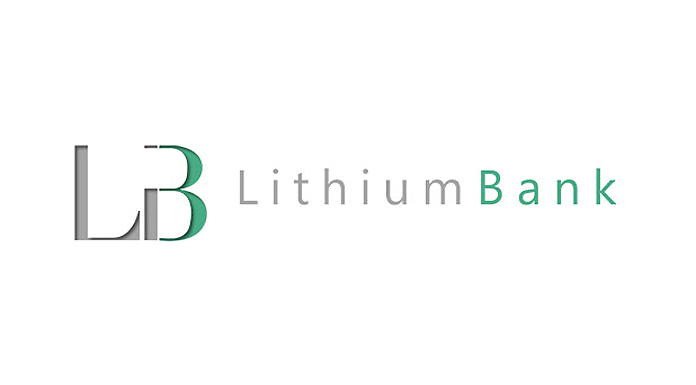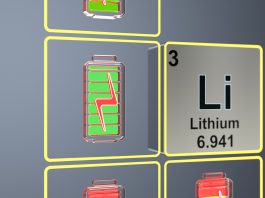Lithiumbank has announced results from the Direct Lithium Extraction (DLE) test work on brine from the 100% owned Boardwalk Lithium Brine Project in Alberta, Canada, demonstrating that the DLE technology is a highly effective and scalable method of extracting lithium chloride from the project.
The Company collaborated with Conductive Energy Inc. to test their proprietary DLE technology using lithium brine collected from the Leduc Formation at the Boardwalk project. Conductive possesses proprietary Ion Exchange (IX) material, also known as bead or resin, which LithiumBank has tested to recover lithium from the Company’s Boardwalk lithium brine selectively.
Conductive’s IX materials are safer than other commonly known materials, such as manganese-based sieves, and are produced in Conductive’s own manufacturing facility in North America. Their IX material is currently being piloted on two other Lithium DLE projects in North America.
The purpose of the DLE test work was to determine the ideal parameters whereby the highest level of lithium recovery is achieved in the shortest amount of time while using the least amount of IX material. This test work was successful in achieving 93% recovery of high-purity, high-concentrate lithium chloride (LiCl) within 60 minutes. The success of this test work provides the technical support required to progress the Preliminary Economic Assessment (PEA) in designing an on-site commercial-scale lithium production facility.
Kevin Piepgrass, LithiumBank COO, commented: “We put Conductive’s DLE technology through a very comprehensive test programme, and their proprietary ion-exchange material has proven to be very effective in extracting lithium from our Boardwalk brine. The collaboration of Hatch and Conductive Energy Inc. has resulted in a high-quality data set that can confidently be used in the processing design and engineering of a commercial-scale lithium processing facility.
“This will be instrumental for delivering a robust PEA of the Boardwalk Lithium Brine Project. As part of LithiumBank’s long-term strategy, the Company continues to build a strong technical foundation in lithium brine development that is expected to benefit Boardwalk as well as the Company’s 100% owned Park Place and Kindersley Projects.”
Results from the DLE testing
DLE testing was conducted over a four-month period at Conductive’s Calgary laboratory to examine the IX material’s spectrum of capabilities and limitations. These tests examine the brine characteristics such as temperature, grade, interactions with impurities, and pH, and test it with several different conditions that can be controlled, including:
- Loading capacity at temperatures ranging from 60-80 degrees Celsius;
- Loading capacity with specified amounts of IX material;
- Loading capacity over specified time intervals;
- Lithium recovery after elution (washing of the IX material);
- Elution testing at specified pH levels; and
- Elution testing at specified temperatures.
LithiumBank, Hatch Ltd., and Conductive will collaborate further to optimise their DLE process through additional tests. Further testing and pre-concentration may improve the reported recovery and residence time that is expected to be used in the PEA.
The Conductive IX material lithium extraction process has two stages, loading and elution. The loading cycle is the front end of the DLE process, where brine interacts directly with the IX material and undergoes a simple reaction in which lithium ions are preferentially attracted to the IX material. After a specific amount of time, as determined by the test work, the IX material is ‘loaded’ and cannot attract additional lithium ions. This is the end of the loading stage, and the IX material is ready for the elution stage.
The elution stage takes the IX material out of the brine to separate the lithium from the IX material in a washing cycle. The residual lithium-depleted brine is then sent to existing oil wells for reinjection into the subsurface. The elution stage of the DLE achieved concentrations of up to 4,000 mg/L (4 g/L) LiCl. The optimisation of the elution stage is ongoing and is expected to be between the range of 2,500 – 4,000 mg/L.
The washed IX material can then be reused to recover lithium from the further brine multiple times. The IX material, based on Conductive’s previous experience, is expected to be reused over 1000 times before it reaches its life cycle (Conductive has not yet conducted tests with Boardwalk brine to measure the longevity of the IX material).
After the DLE process, the concentrated brine is then required to undergo additional steps before it is upgraded to a battery-grade lithium product such as lithium carbonate (LC) or lithium hydroxide monohydrate (LHM). The processes following the DLE are being evaluated by Hatch and are expected to be incorporated into the PEA.

The brine used in the DLE test work was collected in August 2021 from Well 100/09-26-068-22WS/OO located in the South Sturgeon Lake oilfield (see figure 1) within the ‘Production Zone’ and has a reported average grade of 73.8 mg/L Lithium (as previously reported in LithiumBank news release dated June 28, 2022).
LithiumBank first engaged Hatch in August 2021 to conduct a comparative study of a number of North American-based DLE technologies that could deliver a high purity Lithium Chloride (LiCI) concentrate on being used in commercial, battery-grade lithium chemical production from the Boardwalk brine. After an iterative process by Hatch, LithiumBank has narrowed the potential technology providers, with Conductive technology providing the most optimal results.
Table 1. Boardwalk (formally Sturgeon Lake) Leduc Formation Li-brine NI 43-101 inferred resource estimate presented as a global (total) resource.
| Reporting parameter | Leduc Formation Reef Domain |
| Aquifer volume | 321.99 (km3) |
| Brine volume | 16.72 (km3) |
| Average lithium concentration | 67.1 (mg/L) |
| Average porosity | 5.3 (%) |
| Average brine in pore space | 98.0 (%) |
| Total elemental lithium resource | 1,122,000 (tonnes) |
| Total lithium carbonate equivalent | 5,973,000 tonnes (LCE) |
Note 1: Mineral resources are not mineral reserves and do not have demonstrated economic viability. There is no guarantee that all or any part of the mineral resource will be converted into a mineral reserve. The estimate of mineral resources may be materially affected by geology, environment, permitting, legal, title, taxation, socio-political, marketing, or other relevant issues.
Note 2: The weights are reported in metric tonnes (1,000 kg or 2,204.6 lbs).
Note 3: Tonnage numbers are rounded to the nearest 1,000 unit.
Note 4: In a ‘confined’ aquifer (as reported herein), porosity is a proxy for specific yield.
Note 5: The resource estimation was completed and reported using a cut-off of 50 mg/L Li.
Note 6: In order to describe the resource in terms of industry standard, a conversion factor of 5.323 is used to convert elemental Li to Li2CO3, or Lithium Carbonate Equivalent
The Boardwalk Leduc Formation Li-brine inferred resource, as of May 18, 2021, is globally estimated at 1,122,000 tonnes of elemental Li at an average lithium concentration of 67.1 mg/L Li in 16.7 km3 of formation brine volume (Table 2). The global (total) lithium carbonate equivalent (LCE) for the inferred mineral resource is 5,973,000 tonnes of LCE at an average grade of 67.1 mg/L Li (as reported May 31, 2022).
Mineral resources are not mineral reserves and do not have demonstrated economic viability. There is no guarantee that all or any part of the mineral resource will be converted into a mineral reserve. While bench-scale and demonstration pilot plants operated by companies other than LithiumBank are reportedly having success in the recovery of high-purity battery-grade lithium from subsurface confined aquifers, DLE technology is in the development stage and has not yet been proven at a commercial scale.









